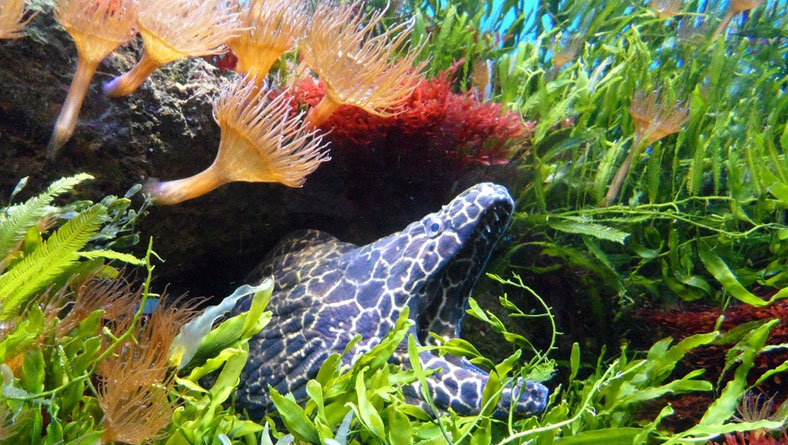What light is suitable for aquarium lighting about metal hadlids, or T5-Fluorescents or Led fixture
Date: 2018-07-29
Aquarium lighting is important for plant growth and fish health in the aquarium. It is especially important in planted and aquascaped tanks when caring for demanding plant species with high light requirements. In nature the sun is the sole source of lighting for freshwater plants and replicating this requires very bright light fixtures.

What lights are suitable for the aquarium, metal hadlids, or T5-Fluorescents or Led fixture? Here we give some advice to the aquarium lighting.
Recently LED lights have become widespread, available and affordable. LED lights utilize the latest technology allowing for lower wattage with the same output. They are highly customizable and many commercial products exist in a wide variety of spectrums.
They release less heat and use less power, an excellent choice for the modern aquarist. 1w+ per gallon of LED lighting is sufficient for a planted aquascape.
With T5 or metal halide fixtures 2-3+ watts of lighting per gallon of aquarium water is sufficient. A deeper tank may require more lighting while a shallower tank may require less. Light bulb temperature should be kept between 6700k and 10,000k. These temperatures will more closely match sunlight and give the plants the required light spectrum needed to grow.
Metal Halides
Metal Halides are very bright ranging from 100-400 watts and can give a shimmering effect in the aquarium which is sometimes desirable due to halides being a single source of light.its shortcoming to metal halides is it easily become quite hot while in use and have to be hung or placed above the aquarium tank. They are a good choice for smaller deeper aquariums. Since the introduction of LED technology, metal halide lighting is slowly being phased out due to it being less economical.
Advantages: bright and useful for deep tanks. desirable shimmering effect simulating nature.
Disadvantages:Very hot and can increase tank temperature. Inefficient and less economica
T5 –Fluorescents
lighting for the aquarium with plants and aquascape T5 lighting is a newer technology than metal halide. For their size they can output high wattage that is evenly distributed to the aquarium. This easily to improve the overall healthiness and growth of all areas of the aquarium plants.
There will be no rippling effect but rather an even glow from corner to corner. But T5's specialized globes can be quite expensive. They also need to be replaced far more often than LEDs because the bulbs spectrum can change over time contributing to algae growth.
Advantages- Bright even aquarium lighting.
Disadvantages- Initial bulb cost can be expensive. No ripling effect that mimics nature. Less efficient than LED fixtures.
LED Fixture
LED are the newest lighting technology to emerge in aquarium fixtures. LED's are backed by technology that is already setup to growing indoor plants. The technology is rapidly becoming cheaper and more advanced than T5 or metal halides. High wattage LED's are extremely bright and can be combined with lenses for even deeper tanks. Clusters of LED's will be less effecient but give the aquarium a rippled appearance mimicking nature. Strips of LEDs can be less effective and a buyer should be certain they are high quality high wattage LEDs that will deliver correct lighting to the plants. This article goes into more detail on appropriate light fixtures for planted tanks.
Advantages- The most effecient solution requiring the least energy for the same lighting. Bulbs do not need to be replaced for up to 50,000 hours. LEDs emit low heat and due to their small size they are often lightweight fixtures.
Disadvantages- Higher initial setup cost.
About CIAC:
CIAC, Abb. For CIPS International Aquascaping Contest, is supported by CIPS (China International Pet Show) and CFAA (China Fisheries Aquascaping Association). Its aim is to bring people together in their passion for the freshwater aquarium and the aquascaping hobby. It is our goal to make the freshwater aquarium hobby grow by inspiring people worldwide and creating a bigger awareness for nature. Aquascaping contests motivate contestants to be creative and inventive. They help inspire other hobbyists in developing and enjoying the aquascaping hobby.
During CIPS 2017 leading aquascapers from 11 nations/regions worldwide were invited to Shanghai for the CIPS Live International Aquascaping Contest (CLIAC), also known as the Champion of Champions Contest. In 2018 the top 100 contestants of the CIAC medium to large aquarium category will have the opportunity to show their skills during CLIAC at CIPS 2018 in Guangzhou.
Copyright © 2008-2025 | China Great Wall International Exhibition Co., Ltd.
 China International Pet Show
China International Pet Show